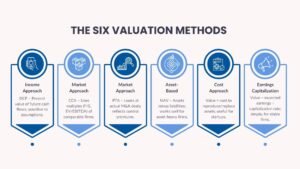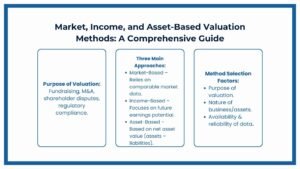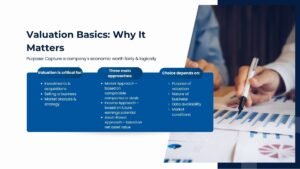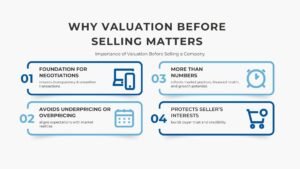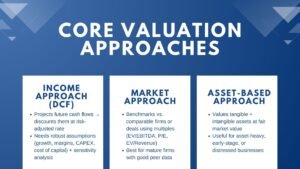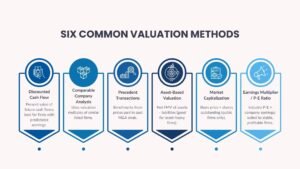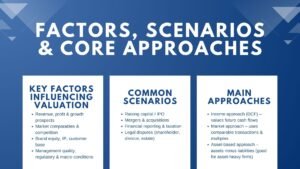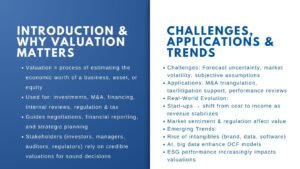
How to Calculate Company Value
Understanding How to Calculate Company Value
One of the core aspects of finance involves determining the value of a company, in a M&A transaction, raising funds, in all strategic planning efforts, and investor due diligence. The appropriate valuation can make a difference in the prices negotiated, the amount of capital, and even growth of the business as perceived.
However, the process of company valuation is not a formula as such, rather a matter of applying the most appropriate methods, based on the context of the strategic plans and perspective of the assumptions that are behind the figures. The article describes the calculation of the value of the company, the reasons it is needed and what methods are put into practice by professionals to come to the justifiable evaluation.
Understanding Company Value and Its Purpose
The present value of the future economic benefits which a business is likely to earn done is the company value that is also termed as enterprise value or business valuation. Such factors as cash flows, growth potential, risk profile, and asset base contribute to formation of this value. Valuation may be applied to enterprise value in other contexts, the value of equity (what owners will receive upon settlement of debts), the fair market value as applicable in a transaction. For firms seeking company valuation services in Singapore expert firm, it is important to align the methodology with the business goals.
Valuation of companies is required in many contexts, which include passing of business ownership, raising venture capital, forming anti-takeovers or joint ventures, financial disclosures, or even employee equity-compensation negotiations. The reason to conduct valuation will determine the target of the outcome not only but also the methodology and detail that is necessary. This is especially relevant for those learning how to value a company in Singapore for M&A or understanding the company valuation by ValueTeam Singapore process for corporate transactions.
The Income Approach: A Focus on Cash Flow and Time Value
The most common of the valuation strategies is the income approach valuation where one estimates his/her value using anticipated cash flows discounted to a present value. The most prevalent one in this case is the so-called Discounted Cash Flow (DCF) method which consists of cash flow projections in the future, an estimation of a terminal value and a discount rate (reflecting the risk and the value of time). Analysts can use the summed discounted returns to come up with the total enterprise value.
The method of valuation of a company through DCF needs good assumptions: growth rates, margins, capital investments, and cost of capital. The discount rate shall be charged with business specific risks and market risks. Although it is powerful, DCF too must be validated and sensitivity analysed to see the sensitivity of the value with changes in assumption.
The Market Approach: Benchmarking Against Comparable Transactions
The market method is based on value that is calculated by comparing the company to other similar firms with regard to size, industry, and financial profile. Such an approach is normally based on implementing valuation multiples like EV/EBITDA, P/E or EV/Revenue multiples applied on recent M&A transactions or those multiples used in the stock market. In case of similar companies, a similar firm can be assigned a similar valuation (where such companies have traded at a 10x EBITDA level).
It is a logical and market-based approach whose consistency lies on the relevance and quality of comparables. Variance in growth potential, geographic orientation or profitability have to be levelled out. The market method, however, can be specially useful in benchmarking and sane-checking with income-based prices.
The Asset-Based Approach: Valuing Tangible and Intangible Holdings
Asset based method places valuation on a company by adding fair market value of net tangible and intangible assets. The practice has been applied in asset-heavy enterprises or in the case of businesses where cash flows are capricious. It can entail liquidation case or going-concern situations where the assets are measured at their cost of replacement.
Despite its common sense, it is worth noting that this method can undervalue business entities that possess well-established brand names, intellectual property, or ineffable growth drivers, including customer loyalty since that is where income or market-based methods could be useful in capturing future earning power.
Choosing a Method That Matches Your Context
The choice of the method of valuation should rest on company maturity, industry, availability of data, and reasons of valuation needs. Given that the company is a fast-growing startup, a DCF could allow forecasting of its further growth, whereas a fully grown firm with stable profits could be closer to comparables. An asset-based valuation may be required in cases of distressed situations or a startup during the initial stages.
Twice in practice, analysts may have different methods and synthesize them and come to a justifiable final estimate. Constructing a valuation model that looks at combining revenue reality with earnings margins, capital expenditure and multiple sensitivity sessions will help objectively measure how the valuation assumption impacts the results and lead to trust in the valuation conclusion.
Key Drivers That Shape Company Value
There are a number of key determinants of valuation of companies. An increase in revenue and profit margins forms the basis of cash generation potential. A larger discount rate is more risky and is less valuable. The terminal growth assumptions are there to define the valuation of the business at a time that is past the forecast. Such intangible assets as brand strength, intellectual property, and others would not show up in a regular multiple but can bring significant intrinsic worth.
Liquidity and assessment of liabilities as well as capital structure and working capital requirements have also an effect on value of the equity because enterprise value less net debt equates to value of equity, that is the reward to shareholders.
Common Pitfalls and Professional Insight
Valuation is an art and science. Risks peculiar to use general risks such as overly optimistic assumptions about the growth, insufficient approximations about working capital requirements, incorrect discountation rate, or using inappropriate comparability. Mispricing may be caused by overdependence on a single method or the inability of conducting sensitivity analyses.
Multiplying with the use of professionals, dealing with investment bankers, valuation firms or financial advisors makes it more rigorous. Such specialists access proprietary transaction data, sophisticated modelling tools and benchmarks in the industry. The valuations by professionals also have credibility among investors, regulators, and lenders in case of a high-stake event such as an M&A or financing.
Conclusion: Value Begins with Assumptions
The company value is calculated by determining an appropriate purpose and selecting appropriate measures. The findings will depend upon the well-vetted pre-conditions and the knowledge of the context, whether it is prepared on the basis of discounted cash income, market multiples or on the basis of assets. Valuation is not only used to set prices on transactions, it is also utilized to make strategic decisions, determine capital requirements and answer business potential to the stakeholders.
Innovations in the contemporary economic environment make the skill of calculating company value a requisite of leadership suites, investors, and advisors. Organizations can obtain a marketable and strategic view of their value through the integration of various value methods, stress-testing assumptions and basing estimates on market and financial data


